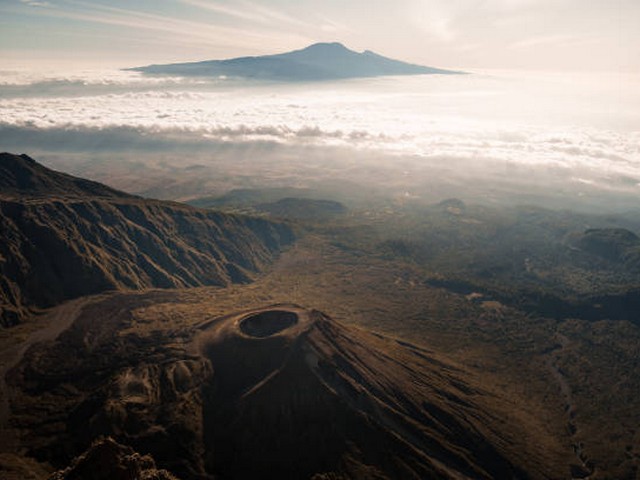How To Enjoy Kilimanjaro’s Nature Without Disturbing Wildlife
Welcome to the majestic world of Mount Kilimanjaro, where the earth touches the sky and the air is filled with the spirit of adventure. At Kilimanjaro Centre for Trekking and Ecotourism (KCTE), we believe that the beauty of Kilimanjaro is not just in its towering peaks and stunning glaciers, but also in its rich and diverse wildlife. As nature lovers and adventurers, it is our duty to enjoy the splendors of Kilimanjaro responsibly, ensuring that our footprints do not disturb the natural habitat and wildlife that make this place unique.
Embracing the Silence: The Art of Quiet Observation
One of the profound joys of trekking through Kilimanjaro is the opportunity to witness wildlife in its natural habitat. To truly appreciate these moments, embracing the art of quiet observation is key. The tranquility allows you to hear the subtle rustle of leaves as a dik-dik navigates through the underbrush or the distant call of a Hartlaub’s Turaco. By keeping noise to a minimum, we not only enhance our own experience but ensure that the daily routines of these creatures are not disrupted by our presence.
Why Silence Enhances Your Trekking Experience
In the silence, your senses sharpen. The colors seem richer, the smells more distinct, and every small sound tells a story of life thriving under the canopy of Kilimanjaro’s forests.
Follow the Path: Respecting Established Trails
Kilimanjaro is crisscrossed with trails that have been carefully mapped to balance human presence and wildlife conservation. Sticking to these trails is crucial. Straying from the path can lead to soil erosion, plant damage, and can disturb nesting sites or feeding grounds of animals.
How Sticking to Trails Protects Wildlife
By using established trails, we minimize our impact and allow vegetation to flourish alongside the routes, providing shelter and food for wildlife, thus maintaining the ecological balance.
Timing is Everything: When to Observe Wildlife
Dawn and dusk are magical times on Kilimanjaro. They are also the moments when many species are most active. Planning your wildlife watching around these times can enhance your chances of seeing Kilimanjaro’s inhabitants while also enjoying the ethereal beauty of sunrise or sunset over the African landscape.
Best Times for Wildlife Encounters
Early morning often sees animals foraging for food, while late afternoon is usually a time for pre-nightfall activity. These periods provide excellent, low-impact opportunities for wildlife observation.
Capture Memories, Leave No Trace
Photography is a wonderful way to preserve your memories of Kilimanjaro’s wildlife. However, it’s vital to practice responsible photography. Use zoom lenses to keep a respectful distance, avoid using flash, and never attempt to manipulate the animal’s behavior for a better shot.
Ethical Wildlife Photography Tips
Keeping a respectful distance ensures that animals are not startled or stressed by human presence. This respect for their space contributes to a sustainable ethical approach to wildlife photography.
Educate Yourself and Others
Understanding the behaviors and needs of the wildlife you encounter on Kilimanjaro can deeply enrich your trekking experience. At KCTE, we provide our clients with educational resources about the local ecosystems and wildlife.
Importance of Wildlife Education
An informed trekker is a conservation ally. By understanding the ecological roles and conservation status of Kilimanjaro’s wildlife, trekkers are more likely to appreciate and advocate for their protection.
Join Eco-Friendly Trekking Expeditions
At Kilimanjaro Centre for Trekking and Ecotourism, we specialize in eco-friendly expeditions that prioritize minimal environmental impact. We equip our clients with the knowledge and tools to enjoy Kilimanjaro’s natural beauty responsibly.
Why Choose KCTE?
Our expert guides are trained in eco-tourism and wildlife conservation. They lead by example, showing how to interact with the environment in a way that ensures it remains pristine for future generations.
FAQs on Enjoying Kilimanjaro’s Nature Responsibly
Q1: What should I do if I encounter wildlife on the trail?
A1: Remain calm, quiet, and enjoy the moment from a distance. Do not approach or attempt to feed the animals.
Q2: Are there specific rules for camping on Kilimanjaro?
A2: Yes, always use designated camping sites, keep fires within provided pits or stoves, and carry out all trash.
Q3: How can I minimize my impact while trekking?
A3: Stick to trails, carry all waste out, use eco-friendly products, and avoid single-use plastics.
Q4: Can I take pets on my trek on Kilimanjaro?
A4: No, pets are not allowed as they can disturb wildlife and introduce diseases.
Q5: Why is it important to use a local guide?
A5: Local guides are knowledgeable about the mountain’s ecosystems and cultural norms. They ensure you have a safe and insightful experience.
Conclusion: Your Adventure Awaits
Mount Kilimanjaro is not just a trek; it’s an opportunity to connect with nature and learn about the delicate balance of an ecosystem. At Kilimanjaro Centre for Trekking and Ecotourism, we are committed to providing experiences that are not only unforgettable but also respectful and sustainable. We invite you to book your climbing adventure with us and discover the majestic beauty of Kilimanjaro in a way that honors the wildlife that calls it home.
Embrace the journey, respect the wild, and carry the spirit of conservation in your heart. Join us on a trekking adventure that you will cherish forever, not just for the breathtaking views but for the responsible footsteps you’ll leave behind.




